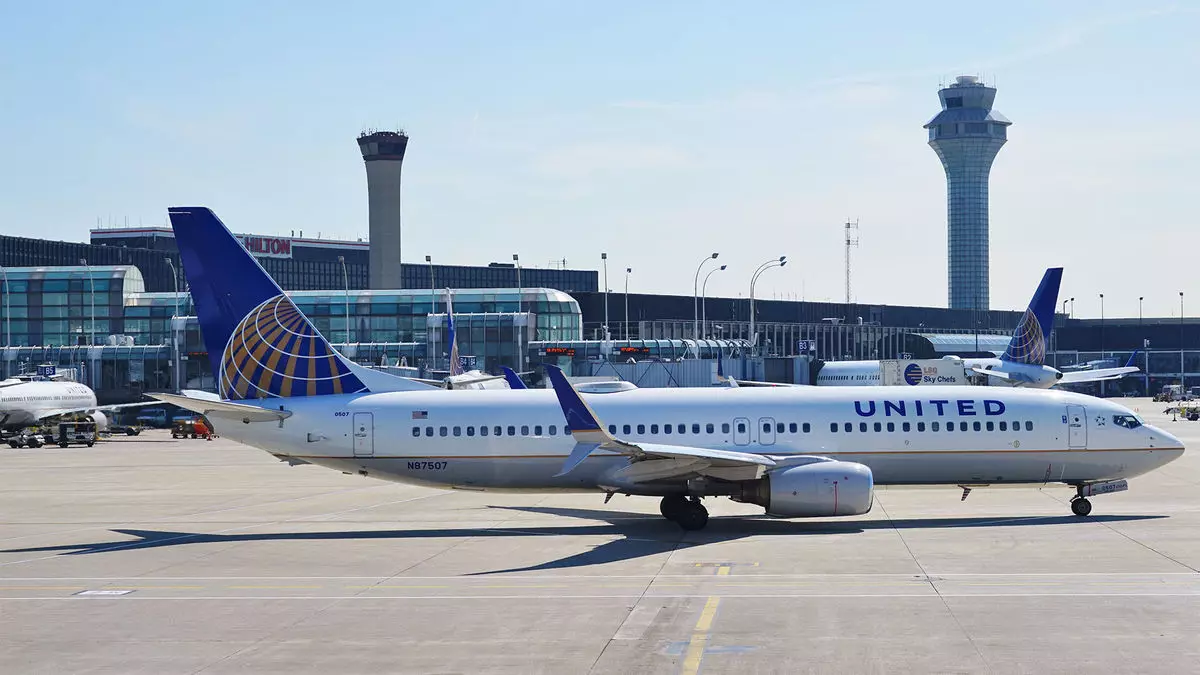The ongoing legal confrontation between American Airlines and a coalition of the city of Chicago and United Airlines represents a pivotal moment in the aviation industry, particularly as it pertains to the allocation of coveted gate space at Chicago O’Hare International Airport. This scenario epitomizes the intricate dynamics of competition among airline titans, with potential repercussions extending far beyond a singular dispute over gate assignments.
The High Stakes of Gate Allocation
At the heart of this conflict lies the strategic division of limited gate resources at O’Hare, regarded as the fourth busiest airport in the United States. With United Airlines operating 90 gates while American commands 71, the proposed gate redistribution could further tilt the balance of power in favor of United. If the preliminary proposal by the city materializes, it could grant United an additional five gates while American would see a drop of four. This seemingly modest change could reverberate through the competitive landscape, redefining market dynamics and altering the corporate strategies of both airlines.
Brett Snyder, a well-respected airline industry analyst, suggests that this gate adjustment could hand United a decisive advantage, fortifying its growing dominance at O’Hare. By recalibrating how gate access is allocated based on historical usage, the plan may inadvertently entrench United’s position, enabling it to expand while potentially constraining American’s ability to reclaim its foothold. Such a shift, if confirmed, could create a long-term competitive disadvantage for American Airlines that may be difficult to overcome.
A Tale of Recovery and Resilience
The implications of this dispute extend into the broader context of airline recovery post-pandemic. United has showcased a robust rebound since the COVID-19 pandemic, significantly outpacing American in a resurgence that bolsters its gate-utilization narrative. Between 2019 and 2024, United’s seat capacity at O’Hare soared from an annual lead of 9.3 million to a staggering 13 million. Meanwhile, American Airlines has struggled to regain its pre-pandemic flight levels, registering a 24.3% decline in O’Hare seat availability compared to 2019 levels. The sharp contrast in recovery trajectories puts additional pressure on American to advocate for its interests more vigorously.
In stark contrast to American’s current predicament, United’s ambitious growth strategy heralds an upward trajectory. United’s ability to fly 99.2% of its 2019 seat count last year, juxtaposed with American’s decline, highlights the competitive vulnerabilities faced by American Airlines. The unfolding situation at O’Hare serves as a litmus test for the industry’s recovery while simultaneously illustrating the harsh realities associated with competition in a high-stakes environment.
The Legal Framework and Its Implications
American’s legal maneuvering stems from concerns regarding the timing of the gate reallocation process, arguing that the city initiated this shift prematurely and contrary to a lease agreement finalized in 2018. This litigation underscores the complexities of airport management and the regulatory frameworks governing airline operations. The 2018 negotiations, which required City Hall to expedite the construction of common-use gates, now play a critical role in the current allocations. American Airlines contends that its ability to leverage these new gates before the reallocation assessment could yield a favorable outcome if granted additional time.
Moreover, American Airlines has sought to invoke contractual language and past communications with the city to bolster its case—an indication of the intricate legal strategy in play. The implications of this case extend beyond mere gate access; they raise questions regarding regulatory transparency, fair competition, and the integrity of agreements in a rapidly changing industry landscape.
United Airlines and Market Positioning
In addition to the gate dispute, United’s market positioning has been reinforced by its branding efforts, attracting a loyal customer base that might sway the competition further in its favor. According to United’s Q1 earnings call, the airline has reported advantageous revenue metrics, outperforming American Airlines by a notable 13% in terms of yield per passenger mile. The metrics suggest that consumer preferences are shifting, further complicating American’s fight for market share.
Snyder posits that while American has the capacity to react and expand, the viability of such a strategy might be questionable in light of United’s aggressive utilization of newly acquired gates. This calls into question American’s long-term strategy in Chicago—should they ramp up their operations to keep pace, or seek efficiencies and possibly scale back their ambitions?
This ongoing showdown at Chicago O’Hare serves as a direct reflection of the fierce competition and unpredictability endemic to the airline industry, wherein every gate assignment can ripple out into broader commercial implications. The outcome of this battle will undoubtedly serve to inform the strategies and approaches adopted by airlines nationwide as they continually navigate the complexities of growth, stability, and competitive advantage in a post-pandemic aviation landscape.


Leave a Reply